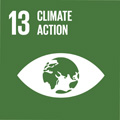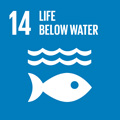- Docente: Claudia Romagnoli
- Credits: 6
- SSD: GEO/02
- Language: Italian
- Moduli: Claudia Romagnoli (Modulo 1) Fabiano Gamberi (Modulo 2)
- Teaching Mode: Traditional lectures (Modulo 1) Traditional lectures (Modulo 2)
- Campus: Bologna
- Corso: Second cycle degree programme (LM) in Geology and Territory (cod. 9073)
Learning outcomes
The course proposes the basic knowledge on the main geological processes involved in the formation and evolution of continental margins from the coast to oceans. The students will acquire competencies on: - the geological setting of Italian Seas, with particular regard to their late-Quaternary evolution; - geological hazard in the marine environment; - main techniques os survey, sampling and mapping of marine and coastal areas.
Course contents
Introduction: development of Marine Geology and of “Plate tectonics”. Geological and geophysical characteristics of divergent, convergenti and transform margins.
Physiography of the seafloor: structure and evolution of continental margins and oceanic basins in relation to their geodynamic setting.
Survey techniques in the marine environment: basics of main geological- geophysical techniques for the study, sampling, mapping and monitoring of marine areas.
Processes in the marine environment: ocean circulation, currents, tides. Sea-level fluctuations at different time scales. Interactions among processes and related sedimentary record. Shallow-water and pelagic sedimentation, sediment transport and reworking due to gravity currents. Gas-charged sediments and fluid seepage at the seabed.
Marine geology of the Italian Seas: geological characteristics of the Italian seas in the framework of the evolution of the central Mediterranean Basin.From continental shelves to the littoral area: main factors in the late-Quaternary and recent evolution of shelf and coastal systems.Coastal hydrodynamics and morphodynamics. Marine geohazard in littoral and marine areas. The shelf and coastal systems in the view of resources and overall anthropic impacts.
Readings/Bibliography
The slides used in the lectures will be available in the University web repository IOL.
Among referenced bibliography:
Seibold E. and Berger W.H. (2017) The Sea Floor. An Introduction to Marine Geology. Springer-Verlag.
Micallef A., Krastel S., Savini A. (2018). Submarine Geomorphology. Springer-Verlag.
Teaching methods
The course is composed of 6 credits, subdivided as follows:
Part I: 4 CFU of frontal teaching and 1 of laboratory on field.
Part II: 1 CFU of frontal teaching/laboratory.
Assessment methods
Final oral examination. A written report on the field activities will integrate the final evaluation.
Teaching tools
Besides the slides of lectures, other integrating material will be used for exercises such as maps, videos, data from marine surveys etc.
Office hours
See the website of Claudia Romagnoli
See the website of Fabiano Gamberi
SDGs


This teaching activity contributes to the achievement of the Sustainable Development Goals of the UN 2030 Agenda.
